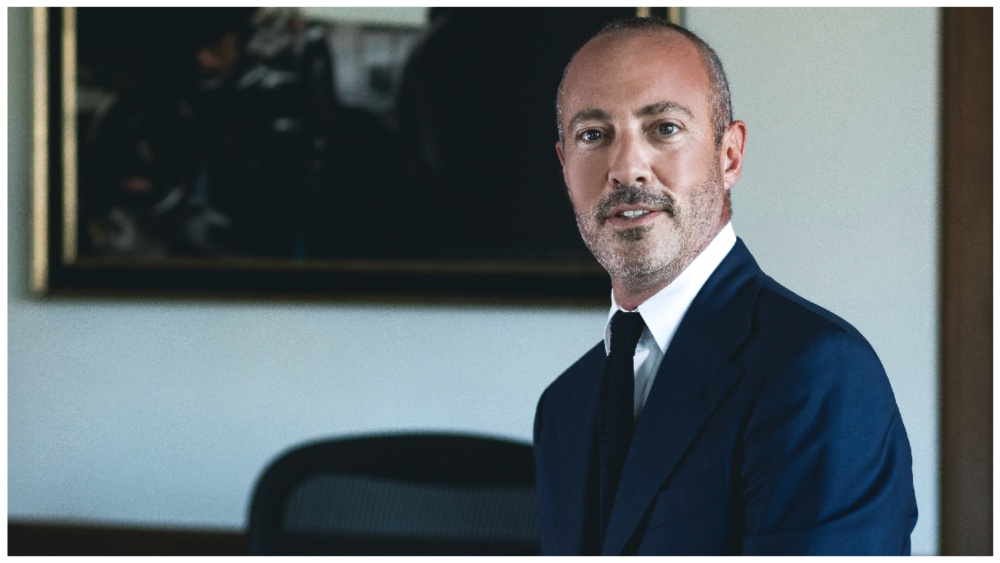Cinecittà Studios CEO Nicola Maccanico on Impending Pain of SAG-AFTRA Strike: It Could Become a Big Problem for Us

Nicola Maccanico, a former Warner Bros. and Sky Italia senior exec, has been spearheading the radical overhaul of Rome’s Cinecittà Studios since June 2021, when the government-owned facilities secured a multi-million dollar loan provided by the European Union’s post-pandemic recovery fund to upgrade and expand the iconic facilities.
Under Maccanico’s watch, the studios – which now boast 20 state-of-the-art soundstages and one of Europe’s largest LED walls – have become a magnet for Hollywood productions, such as Netflix’s period soap “The Decameron” and Roland Emmerich’s gladiator series “Those About to Die,” which is still currently shooting.
But, of course, the SAG-AFTRA strike is starting to slow things down and could “become a big problem,” as Maccanico tells Variety below.
You were just at Venice where several films shot at Cinecittà launched, one being Saverio Costanzo’s “Finally Dawn.” How are the studios doing? Are you feeling the pain of the SAG-AFTRA strike?
We are in good health. After bringing the studios back in the black [with a €1.8 million ($1.9 million) profit for fiscal 2022], we are on a growth trajectory for 2023. We’ve had a great first semester, thanks to productions such as Luca Guadagnino’s “Queer” with Daniel Craig, Roland Emmerich’s “Those About to Die” and Joe Right’s “M,” just to name a few. And by the way, Emmerich is still shooting. But, of course, we are starting to suffer the impact of the SAG-AFTRA strike. So we are growing. But it has to be noted that the strike is an issue and we are all hoping that a solution can be found in coming weeks. If that were not to be the case, it would become a big problem for us.
I know you have non-disclosure agreements, but what are the prospects for attracting AMPTP productions if the strike ends soon?
There is plenty of prep activity underway. We are interacting with several productions that are ready to go. As soon as — as I hope — the situation gets unblocked, I expect to see plenty of [U.S.] productions at Cinecittà, besides the ones that are currently shooting. Of course, the more the strike drags on, the more this will weigh on the budgets of these productions.
How reliant is Cinecittà on Hollywood?
Another aspect that I am pleased to point out is that, during the course of the past two years, we’ve worked with a wide range of productions. So we have the advantage of having a broad spectrum of clients. Lots has been said – and rightly so – about our relationship with Fremantle, which is our main client. But over the past two years, Fremantle has occupied roughly 37% of our space. So we work with lots of other companies, line producers and international productions, besides local and international broadcasters. This also gives us a greater possibility to react to the impact of the U.S. strike.
Franco-Tunisian entrepreneur Tarak Ben Ammar has announced plans to open new studios in Rome, which he says are needed since Cinecittà is at full capacity. Is that the case?
Cinecittà is running on all cylinders. But the notion that the studios are fully occupied through 2030 is an illusion. Like all studios, when you are full, it means you are 80% full. And there are always more opportunities. So Cinecittà will continue to be successful but also very accessible, and that’s how we want it.
There has been talk of the government planning to tweak Italy’s tax rebate. Could these tweaks impact foreign productions?
The good news is that the current government, like the ones that preceded it, firmly believes in the tax rebate as a tool. There is no intention to curtail the positive potential of this type of tool. Therefore the production tax rebate, which has been a cornerstone of our industry – not just Cinecittà – is something solid that the Italian market will continue to benefit from because the current government continues to firmly believe in the film and TV industry as a crucial industry for this country.
Read More About:
Source: Read Full Article